Coros Pace 4 review: The lightweight AMOLED running watch that outperforms its price
A featherlight AMOLED running watch with superb accuracy and exceptional battery life for the price


The Coros Pace 4 nails the essentials. It is light, bright, accurate and lasts longer than any AMOLED watch at this price has any right to. If you want serious training features without paying premiums, this is the easy recommendation.
-
+
Super lightweight
-
+
Long battery life
-
+
AMOLED screen for better readability
-
+
Accurate GPS and HR
-
+
Great value for money
-
-
Action button not customisable
-
-
No offline maps
-
-
Music storage limited
Why you can trust T3

Coros might have felt a little left out this year, given the absolute onslaught of Garmin launches in 2025. That may explain why the company decided to release three new smartwatches in the space of three months. The newest addition to the performance lineup is also the most beginner-friendly and one of my favourite Coros franchises: the Coros Pace 4.
The Pace series has always been the most no-nonsense choice in a brand already known for its no-nonsense running watches. The Pace 4 continues that tradition by offering impressive functionality in an ultralight body at a very reasonable price, undercutting big-ticket rivals such as Garmin by a considerable margin.
This is the first mainline Pace to adopt an AMOLED display, replacing the MIP screen of the Coros Pace 3. It also adds dual-band GPS, built-in microphone support and longer battery life. It sits below the Coros Pace Pro in the hierarchy, but it offers more than enough to tempt runners at every level.
After a week of testing, the Pace 4 really grew on me, not just because of its stripped-back approach but also its featherlight feel and excellent accuracy. If you want a proper performance wearable without spending Garmin money, the Coros Pace 4 should be at the top of your list.
Coros Pace 4 review
Price and availability
The Coros Pace 4 was launched on 10 November 2025 and is available to buy now at Coros US, Coros UK and Coros EU with a recommended retail price of $249 / £229 / €269 (~AU$479). Coros AU lists the watch as ‘coming soon.’
This positions the watch firmly in the mid-range of the running watch market and makes it the natural successor to the Pace 3, which has recently been reduced in price. The Pace 3 now sells for $199 in the United States, £199 in the UK and approximately €229 in Europe.
The premium tier in this lineup is still occupied by the Pace Pro, although its pricing has also been permanently adjusted recently. The new retail price of the Pace Pro in the United States is $299. In the United Kingdom, it sits at £299, and in Europe it tends to land around €349.
Get all the latest news, reviews, deals and buying guides on gorgeous tech, home and active products from the T3 experts
Design and build quality
The Coros Pace 4 feels like the most refined version of the Pace series to date. It keeps the lightweight philosophy that defined the earlier models but updates the entire physical package with more modern components.
The case measures 43.4 millimetres across, which makes it slightly larger than the compact Pace 3, yet still noticeably smaller and slimmer than the Pace Pro. The thickness sits at 11.8 millimetres without the PPG dome and 13.6 millimetres including the sensor housing. This creates a profile that feels unobtrusive on the wrist even during long training sessions.

Weight remains one of the biggest strengths of the Pace line, and the Pace 4 sustains that identity with ease, with the body alone weighing 27 grams. The watch comes in at 32 grams with the nylon strap or 40 grams with the silicone strap. These figures are close to the Pace 3, which remains one of the lightest GPS watches available, and significantly lighter than the Pace Pro.
I can’t emphasise enough how light the Pace 4 is. It sat on my wrist for a whole week, and not once did I feel it was uncomfortable. It’s roughly half the weight of the Garmin Fenix 8 Pro, and is also a lot slimmer, which makes all the difference when you want to wear a running watch all day.
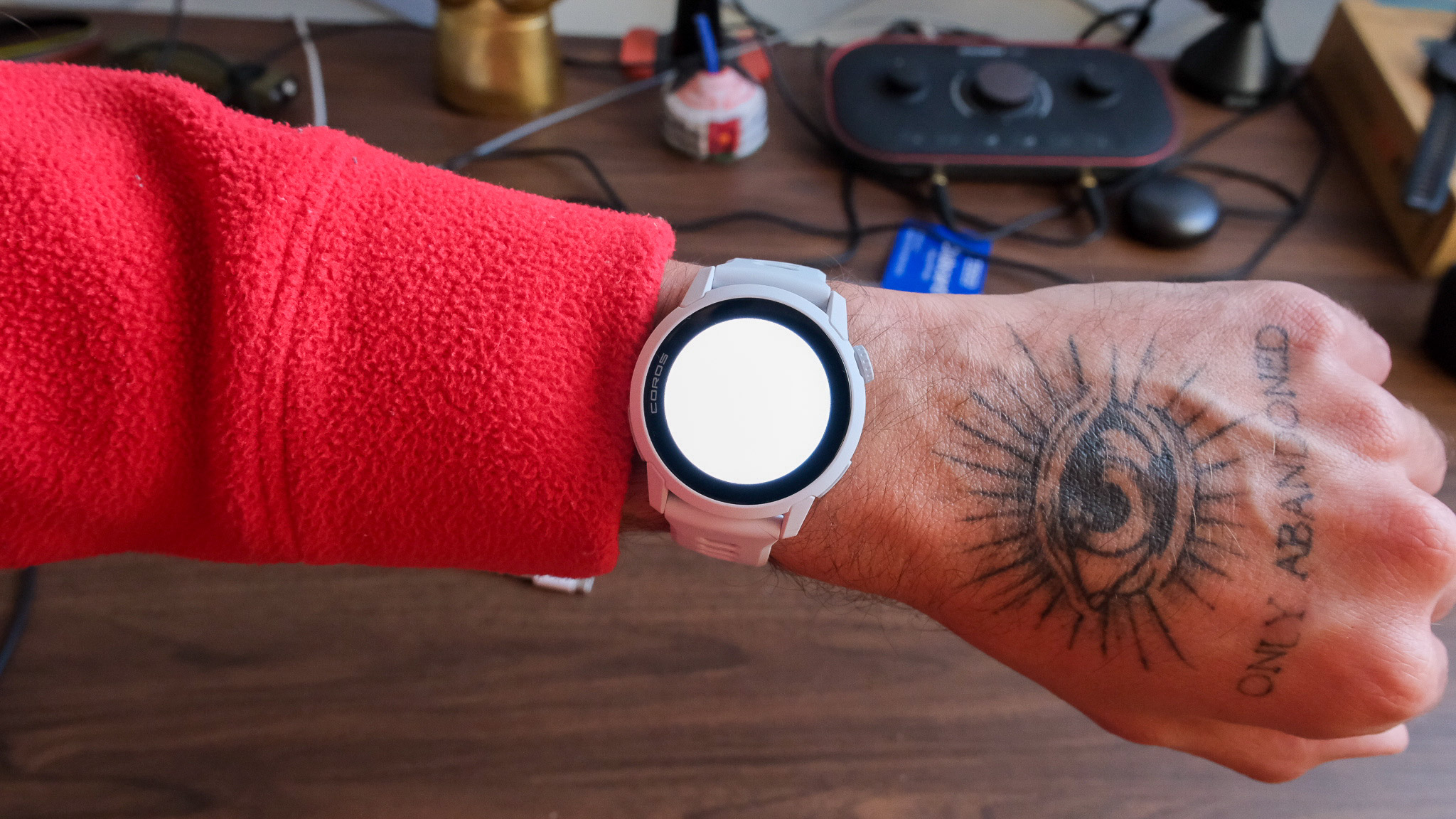
The new flashlight function in action
The screen is one of the biggest changes from earlier Pace generations. Coros has moved the series to a 1.2-inch AMOLED touchscreen panel with a 390 x 390 resolution. This is a dramatic improvement in clarity and vibrancy compared to the Pace 3, which used a low-resolution MIP display.
I found the display to be spot-on: it’s sharp, responsive, and easy to read in most lighting conditions. Touch functionality also works great. It reminds me of when Garmin started moving over its lower-specced Forerunners to AMOLED panels. It worked there, and it very much works here, too.
Materials remain consistent with the rest of the Coros range. The Pace 4 uses a high-strength polymer for the bezel, back and casing, paired with mineral glass for the display. It also retains the control layout of a digital dial, a back button and an action key, supported by full touchscreen input. The watch maintains a 5 ATM water resistance rating.
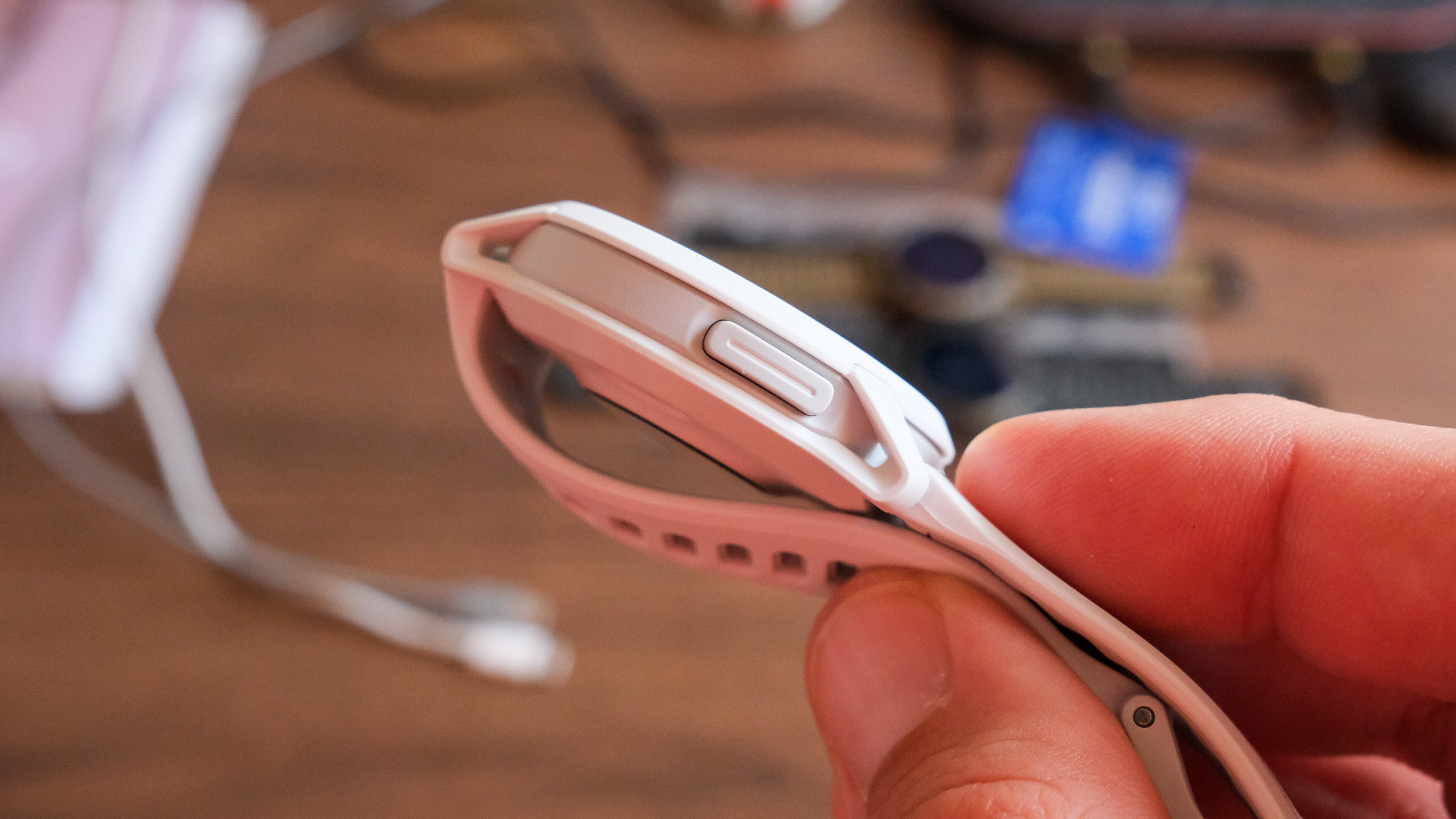
Action button: a missed opportunity (for now)
Even though the button layout works and the press sensation is good, I feel the action button’s potential is wasted at the moment. Unless you’re in a workout, it does nothing, and I couldn’t find a way to customise it, either. It would be great to add functionality beyond workout modes.
Features
Internally, the Pace 4 is now equipped with a revised optical heart rate sensor, which Coros says improves accuracy by reducing spikes and drops during activity. A new SpO2 sensor, a temperature sensor, and a dual microphone array also join the list.
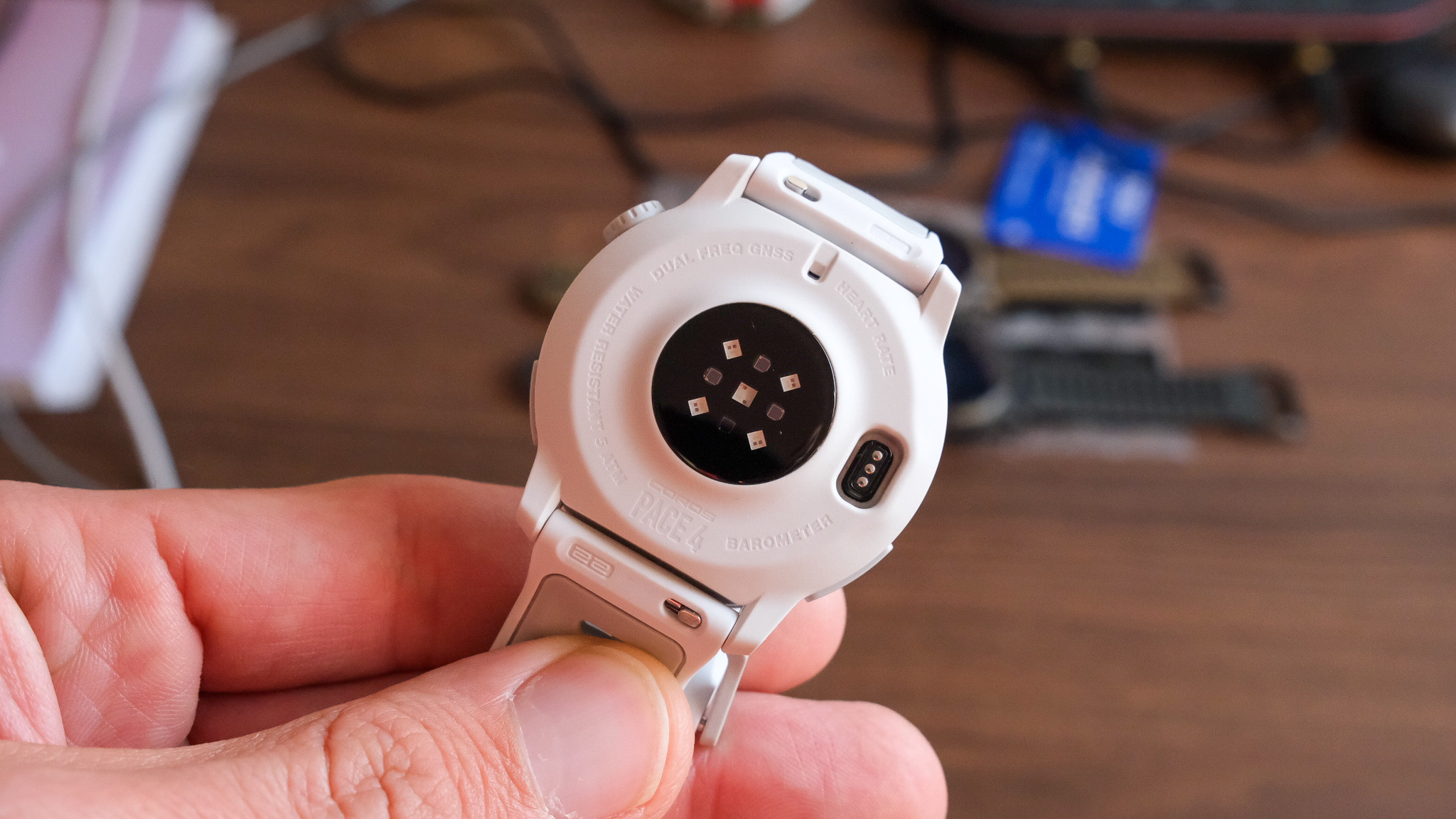
The microphones unlock voice features first introduced in the Nomad and the new Apex 4, including voice pins and post-workout training logs. These allow you to record short voice memos directly from the watch, complete with location stamps or workout context, which are automatically transcribed and stored.
I was excited to try this feature, but once the novelty wore off, I found myself logging voice pins less often than I had at the beginning. I can see this feature being great for athletes who take their training seriously or those who work with coaches, but for everyday runners, it feels slightly redundant. I’m glad it’s included on the watch, though; you get more bang for your buck, and I’m sure some people will appreciate it.
GPS performance also improves over the Pace 3. The Pace 4 supports dual-frequency satellite systems and features new satellite lock optimisations for faster and more accurate positioning. Navigation remains breadcrumb-based, like the Pace 3, but is enhanced with features such as turn-by-turn directions, route syncing, and waypoint support.
(The Pace Pro continues to lead here with full offline global mapping, but the Pace 4 closes the gap in day-to-day utility.)

The watch supports Bluetooth audio with 4 GB of internal storage for music and podcasts, a feature carried over from the Pace 3. New to the Pace 4 is horizontal navigation within the activity interface via the action button. The digital dial still scrolls vertically between data pages, but the action button now allows side-to-side movement across layouts, useful for jumping to your maps and pins.
All the key Coros tools are here, including EvoLab training analytics, the Running Fitness Test, Race Predictor, Effort Pace, Recovery Time, Training Load and the increasingly refined personalised marathon plans.
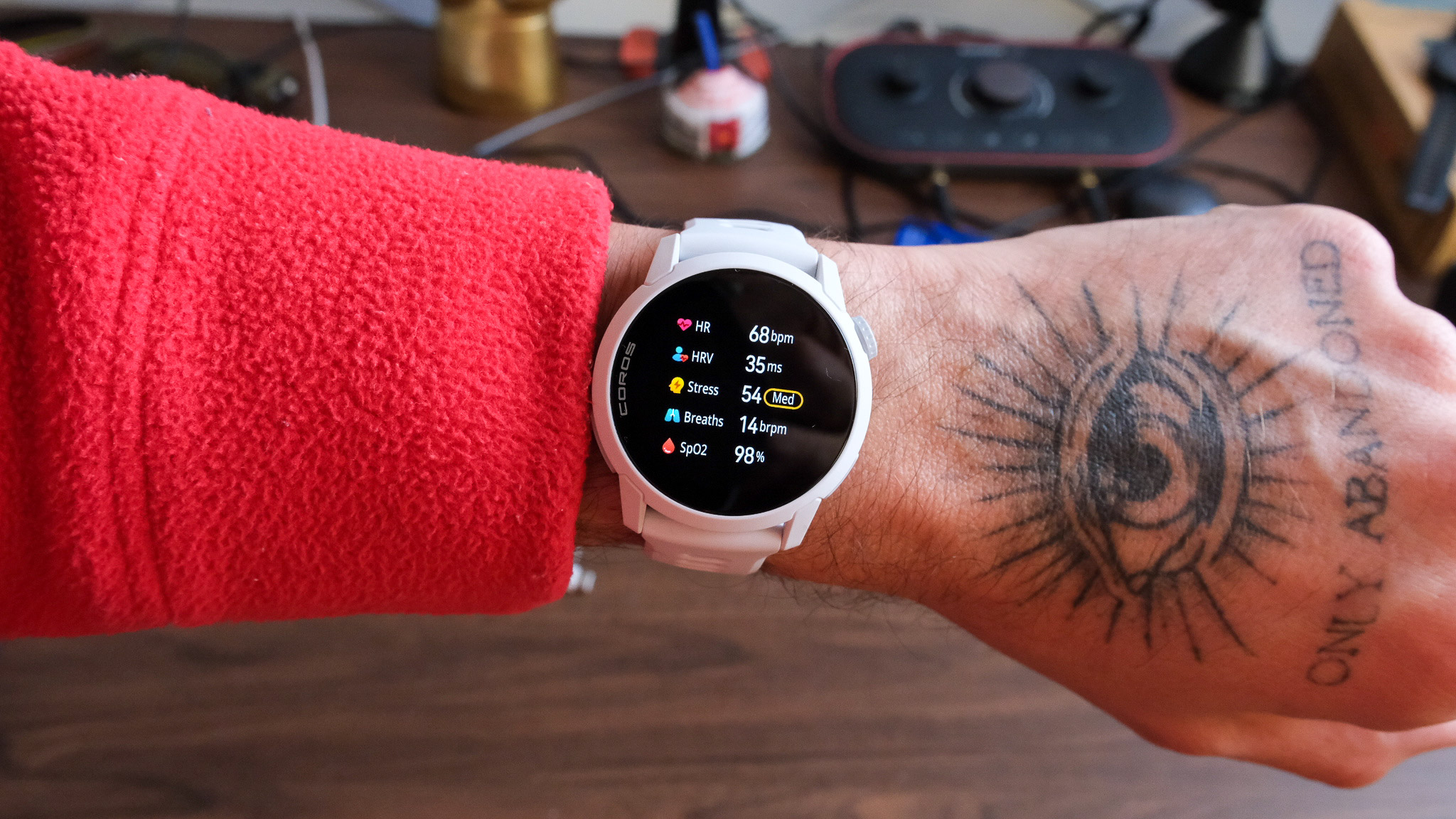
One press Wellness Check is also available on the Pace 4
And despite Coros’ reputation as a brand geared toward serious athletes, the Pace 4 includes plenty of genuinely useful everyday features such as stress tracking, sleep monitoring, smart notifications and sun movement data. As much as I do not want my sports watches to become overly smart, I also do not want them to feel underpowered, and the Pace 4 walks that line beautifully.
GPS and heart-rate accuracy
The Pace 4 delivers excellent GPS accuracy, particularly for its price point, thanks to the updated algorithm and the dual-band GPS. I tracked my outdoor activities with the Pace 4 and the Garmin Forerunner 970, and I couldn’t really see the difference between the two.
Just to clarify, I don’t live in a “challenging GPS environment” with tall buildings and lots of smartwatches competing for the same signal, but even so, for the price, GPS accuracy can’t be faulted. As always, in very tight terrain or heavy tree cover, you might get different results.
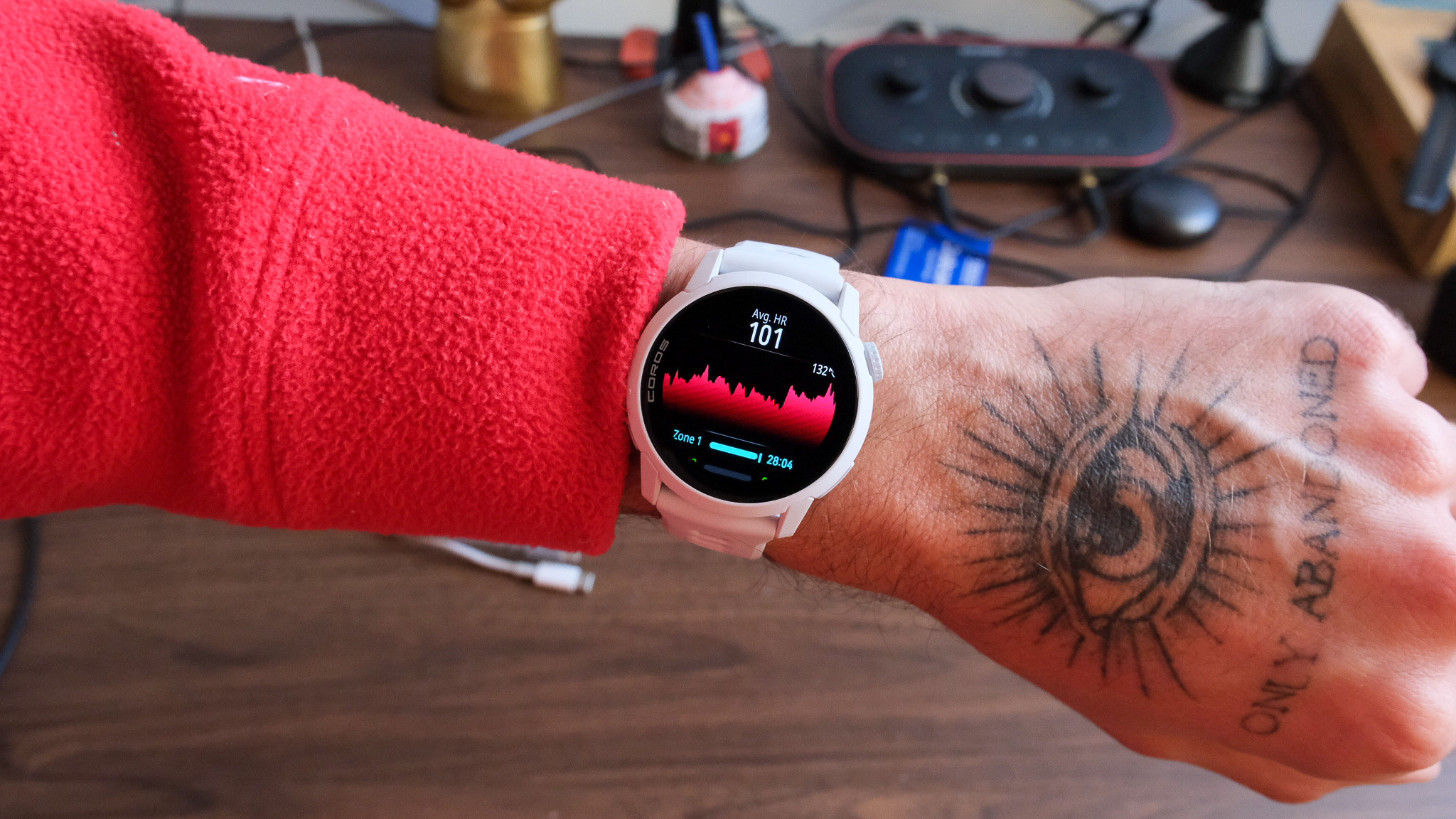
Heart-rate accuracy is impressively solid for a wrist-based optical sensor. The watch nails steady efforts like long runs and bike sessions, where the readings stay locked in and reliable. During strength work or HIIT, the Pace 4 does the same as nearly every wrist-worn device and softens the rapid spikes, treating them as sensor noise rather than genuine short bursts of effort.
In practice, this means that for everyday running, general pace-and-heart rate tracking, the Pace 4 performs exceptionally well; certainly better than you’d expect in this category. That said, performance watches are getting increasingly accurate, so the Pace 4 doesn’t stand out quite as much as it would have 3-4 years ago.
Battery life and charging
In high GPS mode, the Pace 4 delivers up to 41 hours of continuous tracking. This is a huge improvement over the Pace 3, which was rated at 25 hours, and it even edges past the larger and more expensive Pace Pro, which caps out at 38 hours in the same all systems mode.
Dual frequency or Max GPS mode also shows a significant jump. The Pace 4 is rated for 31 hours in this mode, placing it on equal footing with the Pace Pro and doubling the 15 endurance of the Pace 3. For long training days or multi-hour events, this brings the mid-tier model into territory usually occupied by far more expensive watches.

Battery life bruiser
Even with the always-on display active, the Pace 4 maintains 30 hours in high GPS (!) and 24 hours in Max GPS, which again is unusually strong for an AMOLED watch in this category.
The Pace 4 is rated for 19 days (!) of typical use without the always-on display and six days with it. I received my sample with 80% charge on the watch, and after around a week of 24/7 use, it’s still only on 47%. If you train outdoors more often, you can still expect the watch to last for around 12-13 days on a single charge.
Charging time is the same across recent Coros devices, requiring around ninety minutes to go from empty to full. The Pace 4 has one quirk worth noting. It does not allow charging below freezing or above 45 degrees Celsius to protect the battery pack. Anyone running through winter conditions will need to keep this in mind, although it is unlikely to affect most users.
Verdict
The Pace series has always been one of Coros’ biggest strengths and one of the easiest recommendations for runners who want performance without paying premium prices. The Pace 4 continues that streak. It is featherlight, feature-rich, impressively accurate and lasts far longer on a charge than an AMOLED watch at this price has any right to.

My quibbles are small. The action button could use a more flexible customisation system, but this is more of a mild annoyance than a genuine flaw, and it is the sort of thing Coros tends to resolve through software updates anyway. For what you pay, the Pace 4 is outstanding and stands out as one of the best value sports watches of the year.

Matt Kollat is a journalist and content creator who works for T3.com and its magazine counterpart as an Active Editor. His areas of expertise include wearables, drones, fitness equipment, nutrition and outdoor gear. He joined T3 in 2019. His byline appears in several publications, including Techradar and Fit&Well, and more. Matt also collaborated with other content creators (e.g. Garage Gym Reviews) and judged many awards, such as the European Specialist Sports Nutrition Alliance's ESSNawards. When he isn't working out, running or cycling, you'll find him roaming the countryside and trying out new podcasting and content creation equipment.
You must confirm your public display name before commenting
Please logout and then login again, you will then be prompted to enter your display name.